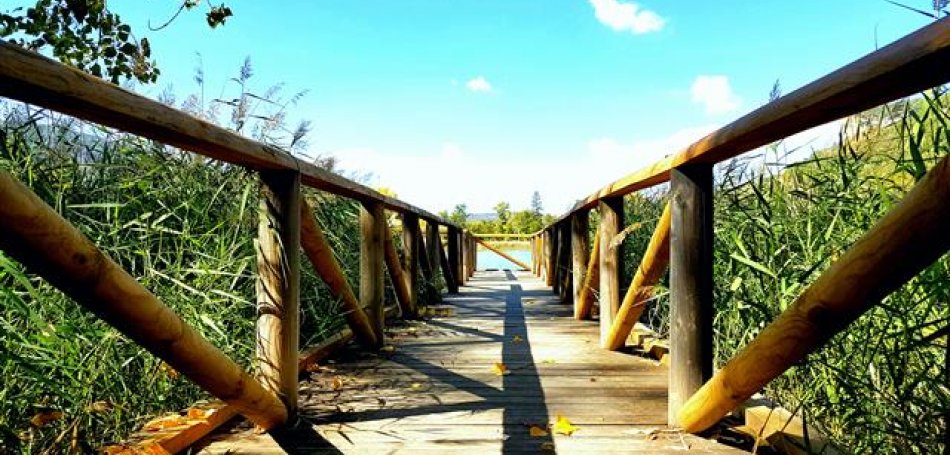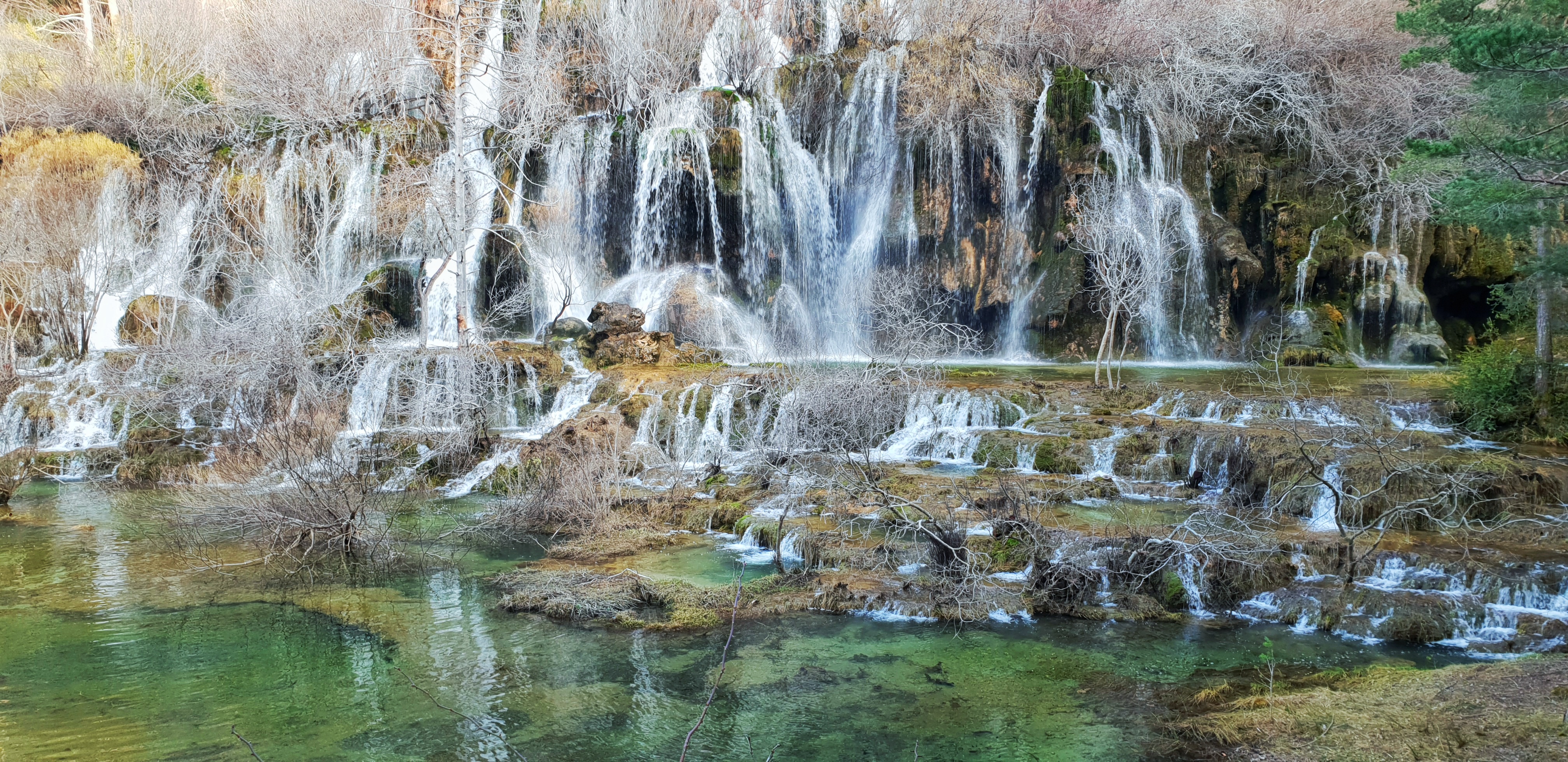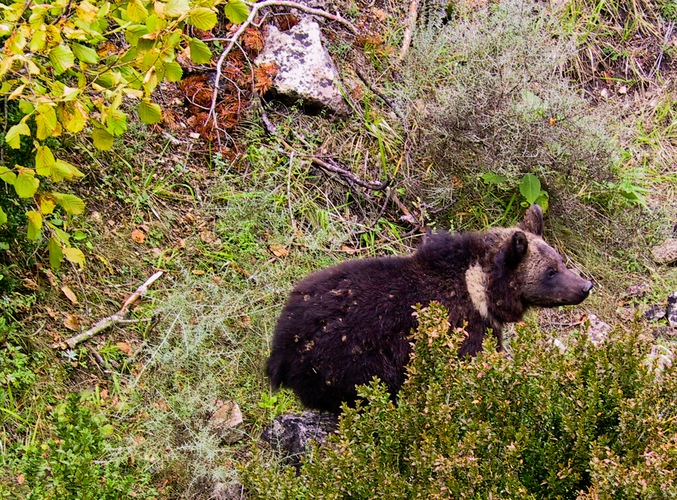
10 essential places in the Serranía de Cuenca
It is said that sometimes you have to get lost to find yourself, and one of our favorite places to get lost is the Serranía de Cuenca. Walking through the Natural Park is a unique experience, a walk becomes an encounter with nature, it is without a doubt one of our great recommendations.
The Serranía de Cuenca is one of the mountain ranges that make up the Iberian System and has a natural wealth of incalculable value. We can mention essential places on your visit to the Serranía such as El Ventano del Diablo, Laguna de Uña, the Enchanted City, the Birth of the Cuervo River, Las Majadas, the Mirador del Tío Cogote, Las Torcas, El Hosquillo... and we still have short to mention some of the most spectacular points from where you can contemplate and enjoy the landscapes of the Serranía. Rivers, forests, ravines and abysses that intermingle and star in an authentic natural miracle that we must preserve and respect as has been done until now.
The most recommended seasons to visit this area are summer, because you will find mild temperatures that will allow you to sleep covered in the hottest months; and autumn, this is the most beautiful season because of its color, the forests are filled with greens, yellows and ochres. An authentic spectacle of nature in its purest form. If you want to get to know the Serranía de Cuenca, we recommend a 5-day trip. You can explore it on foot along its numerous trails, by bike or by car along its paths or paved roads; Always think about your choice to have the least possible impact on this great natural treasure.
At Cuenqueando we have prepared a top ten of the 10 places that you cannot miss in the Serranía de Cuenca:
- The Birth of Cuervo River
It is a Natural Monument located in the Serranía Norte and borders the Natural Parks of the Serranía de Cuenca and the Alto Tajo. Of great beauty due to the formation of a travertine spring, as well as the plant formations typical of Atlantic environments: holly trees, yew trees, rowan trees, etc. The large waterfalls make your visit an experience (depending on the time of year you visit and the rainfall).

- The Enchanted City
As if it had come out of a story, this landscape seems asleep under some type of enchantment. Here the karst modeling has generated whimsical shapes in the rock that surprise the visitor. Walking through this place, on a tour that lasts around an hour, we will be able to observe a unique flora adapted to the different environments that are generated (holes in the rock, shaded areas, pine forest) as well as learn the reason for the shapes that They have been acquiring the rocks. If you want to visit it from Madrid you can do it with the Cuenca Nature & City Tour.
.jpg)
- Uña Lagoon
This lagoon of natural origin was declared a Wildlife Refuge in 1988 due to the diversity of mainly wintering birds that live in the lagoon, as well as other types of birds of prey and mammals such as otters. If you have binoculars or a telescope, don't forget them because you can spot many species of birds both linked to the lagoon such as gray heron, great cormorant, marsh harrier or typical of the rocky cliffs such as griffon vulture or Egyptian vulture. One of the most beautiful trails in Cuenca runs over it: the Sendero del Escalerón y la Raya.
.jpg)
- El Ventano del Diablo
This spectacular viewpoint carved into the rock is known as El Ventano del Diablo, from where the devil himself would throw souls into the void beneath him. With spectacular views over the Júcar canyon, it is a mandatory stop to enjoy its views. But if you have the opportunity to go under the viewpoint you will discover canyons and gorges where you can practice multi-adventure activities or climbing.
.jpg)
- Las Torcas de Palancares
The silence will accompany you along with the sensation of vertigo and emptiness that comes from looking at these curious formations that, in another time, were the habitat of our most famous dinosaur, the Concavenator Corcovatus. Las Torcas are circular depressions caused by the subsidence of the Cretaceous soil above caverns from the Jurassic period that form mysterious circular shapes, in some cases exceeding 100 meters in diameter. There are more than 20 torcas in this area that, together with sinkholes, chasms and caves, make up one of the most spectacular landscapes of the Iberian Peninsula.
.jpg)
- Cañada del Hoyo Lagoons
Very close to Las Torcas we find these Lagoons, unlike the previous ones, these depressions go beyond the water table, giving rise to small lagoons that hide microhabitats where some protected species reside and breed. The place hides curious legends and a very striking effect which is the change in color that occurs in its waters with the change of the seasons, one of the lagoons being seen pink at some times of the year..jpg)
- Hosquillo Park
50km from Cuenca we find the El Hosquillo Park, located in the heart of the Serranía de Cuenca Natural Park. El Hosquillo was created as an Experimental Hunting Park in 1964, where you can see numerous species but the most famous are its bears. Félix Rodriguez de la Fuente dedicated the first documentary about the fauna of Spain to the bears of El Hosquillo in his television series El Hombre y la Tierra. The park can be visited from March to December long weekend. After this date the park closes so that the animals can follow their natural biorhythms, and the bears can retire to their caves to winter.

- Tío Cogote Viewpoint
This place is one of the most impressive viewpoints in Cuenca, it is a spectacular natural balcony overlooking the Serranía, with breathtaking views. From its 1,300 meters above sea level, it is the ideal place to observe the entire valley that extends before view.
.jpg)
- Las Majadas Alleys
Las Majadas Alleys are located in the Cuenca municipality of Las Majadas. A landscape in which you can walk through a sea of stone, created after millions of erosion, these karst formations similar to those found in the Enchanted City. A true labyrinth where it is very likely during the humid months to find mushroom enthusiasts in search of the numerous species that this land produces. Are you one of them? Well, enjoy drinking with our Mycological routes.
.jpg)
- The Birth of Júcar River
Very close to Tragacete we find a place known as the Ojuelos de Valdeminguete where the Júcar River is born, one of the rivers that embraces the city of Cuenca on its way. Near this point we find the Chorreras del Júcar where almost all year round you can see a spectacular waterfall, although it is always advisable to visit it during the rainy season when its flow is more abundant and striking.
%20(2).jpg)
 ES
ES EN
EN PT
PT